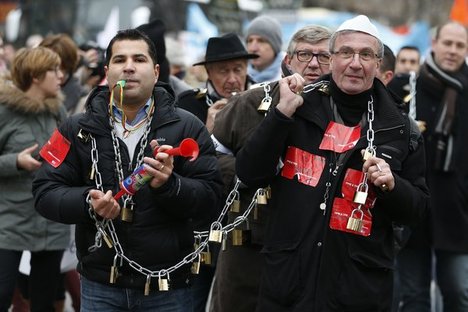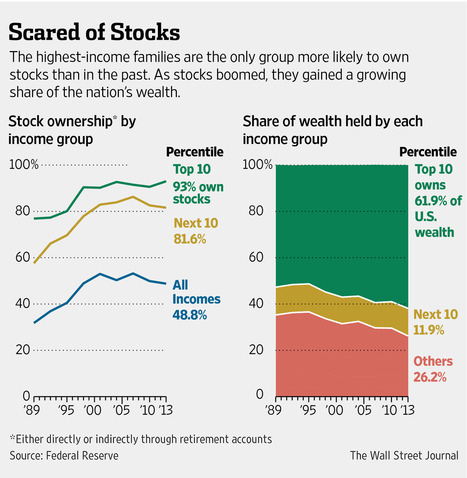(p. B1) Amazon now makes four different kinds of devices. There are dedicated e-readers, multipurpose tablets and, starting this year, a TV streaming device and a smartphone, the Fire Phone. Just this week, Amazon introduced another streaming machine, the Fire TV Stick, a $39 gadget that is the size of a USB stick and promises to turn your television into an Amazon-powered video service.
. . .
(p. B9) What is Amazon’s endgame with all these devices? Mr. Bezos has always said that his mission, with hardware, is to delight users with devices that are priced fairly. The devices also contribute to Mr. Bezos’s famous “flywheel,” the virtuous cycle by which greater customer satisfaction leads to more sellers in his store, which leads to more products, greater efficiencies, lower prices and, in turn, more customers.
“Everything is about getting that flywheel spinning, and it isn’t necessarily about building a big and successful tablet business of their own,” said Benedict Evans, an analyst who works at the investment firm Andreessen Horowitz and has studied Amazon closely. “Whether they actually drive meaningful commerce isn’t entirely clear, but Amazon is rigorously focused on data, so if they’re doing it, you can trust that there must be data that justifies it.”
And if this year’s devices don’t take off, you can bet that Mr. Bezos will try a slightly different tack next year.
For the full commentary, see:
Farhad Manjoo. “STATE OF THE ART; Amazon’s Grand Design for Devices.” The New York Times (Thurs., OCT. 30, 2014): B1 & B9.
(Note: ellipsis added.)
(Note: the online version of the commentary has the date OCT. 29, 2014, and has the title “STATE OF THE ART; Amazon’s Grand Design in Devices.”)
Bezos’s enthusiasm for Jim Collins’s “flywheel” idea is discussed in:
Stone, Brad. The Everything Store: Jeff Bezos and the Age of Amazon. New York: Little, Brown and Company, 2013.



